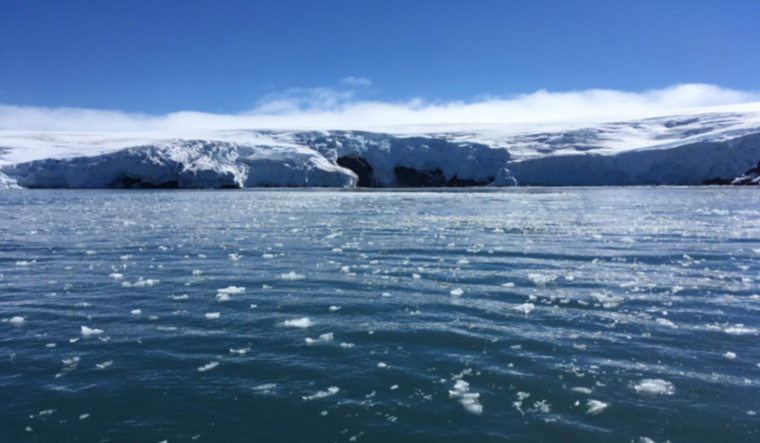A group of glaciers spanning one-eighth of East Antarctica's coast have begun to lose ice over the past decade, hinting at widespread changes in the ocean, a NASA study has found.
East Antarctica has the potential to reshape coastlines around the world through sea level rise, but scientists have long considered it more stable than its neighbour, West Antarctica, the US space agency said in a statement.
In recent years, researchers have warned that Totten Glacier, a behemoth that contains enough ice to raise sea levels by at least three metres, appears to be retreating because of warming ocean waters.
Now, researchers have found that a group of four glaciers sitting to the west of Totten, plus a handful of smaller glaciers farther east, are also losing ice, NASA said.
"Totten is the biggest glacier in East Antarctica, so it attracts most of the research focus," said Catherine Walker, a glaciologist at NASA's Goddard Space Flight Center in the US.
"But once you start asking what else is happening in this region, it turns out that other nearby glaciers are responding in a similar way to Totten," Walker said.
The researchers used new maps of ice velocity and surface height elevation.
Walker found that four glaciers west of Totten, in an area called Vincennes Bay, have lowered their surface height by about three metres since 2008.
Farther east, a collection of glaciers along the Wilkes Land coast have doubled their rate of lowering since around 2009, and their surface is now going down by about 0.24 metres every year, NASA said.
These levels of ice loss are small when compared to those of glaciers in West Antarctica.
However, they speak of nascent and widespread change in East Antarctica.
"The change does not seem random; it looks systematic," said Alex Gardner, a glaciologist with NASA's Jet Propulsion Laboratory.
"And that systematic nature hints at underlying ocean influences that have been incredibly strong in West Antarctica. Now we might be finding clear links of the ocean starting to influence East Antarctica," Gardner said.
Walker used simulations of ocean temperature from a model and compared them to actual measurements from sensor-tagged marine mammals.
She found that recent changes in winds and sea ice have resulted in an increase to the heat delivered by the ocean waters to the glaciers in Wilkes Land and Vincennes Bay.
"Those two groups of glaciers drain the two largest subglacial basins in East Antarctica, and both basins are grounded below sea level, Walker said.
"If warm water can get far enough back, it can progressively reach deeper and deeper ice. This would likely speed up glacier melt and acceleration, but we don't know yet how fast that would happen," she said.


